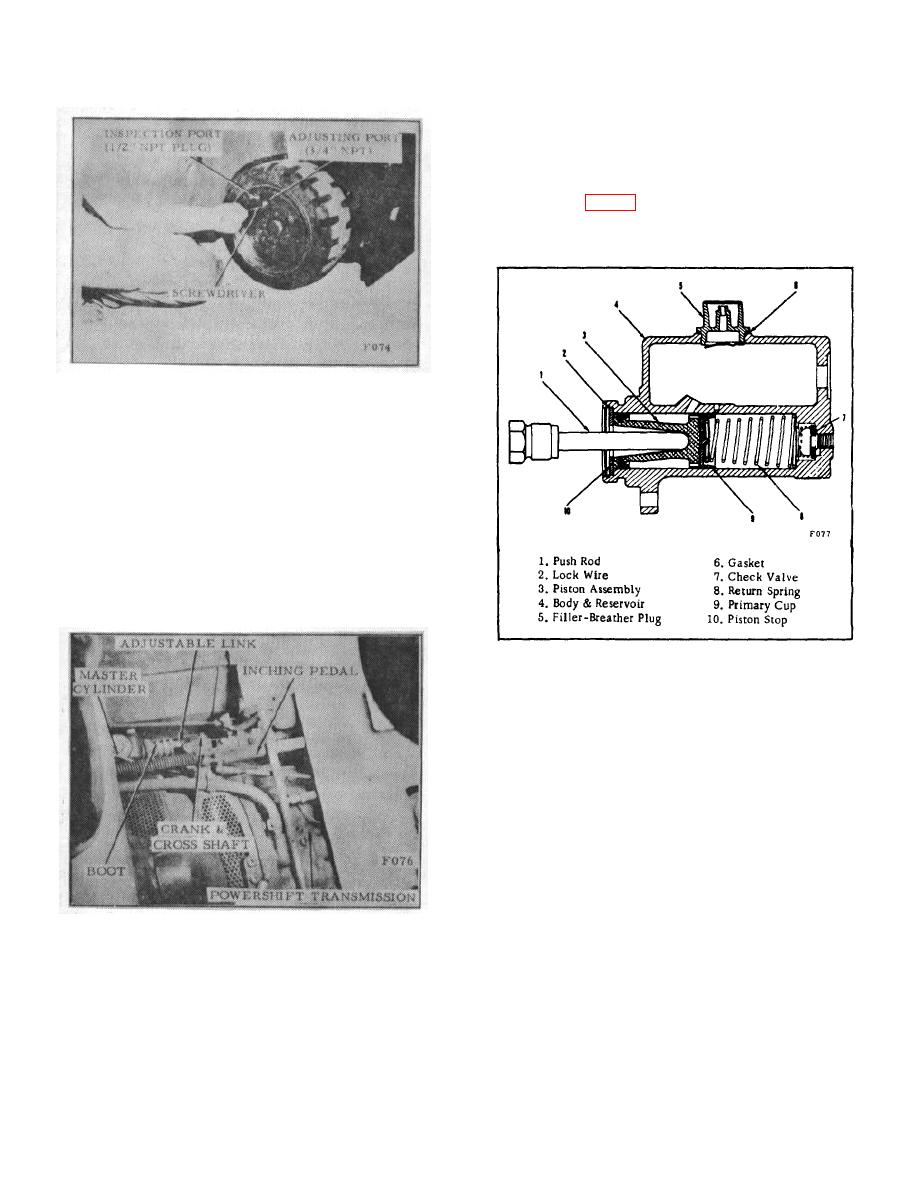 |
|||
|
|
|||
|
|
|||
| ||||||||||
|
|
 BRAKES
system at all times, regardless of expansion (heat) or
contraction (cold).
The secondary compensating
function is the replacement of additional fluid into the
system to offset any loss due to seepage.
The cylinder (Fig. 8) consists of body and reservoir
casting, double check valve and seat, piston cup return
spring, piston cup, piston, piston stop, boot and push
rod.
Figure 6.
4. Apply the brakes to center the shoes. Check
the shoe-drum relationship, by removing the smaller
plug and viewing through the hole. Readjust the brake,
if necessary.
5. Screw the plugs into the wheels.
Lower the
wheels.
MASTER CYLINDER
A. GENERAL (Fiq. 7)
Figure 8.
The fluid reservoir is cast integral over the master
cylinder body. A combination filler and breather plug is
screwed into the top of the reservoir.
B. REMOVAL
1. Remove floor board and clean master cylinder,
making sure no loose dirt is left in the working area.
2. Disconnect the hydraulic line from the master
cylinder. Plug or tape both openings. A short, machine-
sharpened pencil is a good tool for this purpose.
Figure 7.
Converting mechanical effort into hydraulic pressure is
the main function of the master cylinder, which is of the
compensating type. Its primary compensating function
is to maintain a constant volume of fluid in the hydraulic
B-132
|
|
Privacy Statement - Press Release - Copyright Information. - Contact Us |